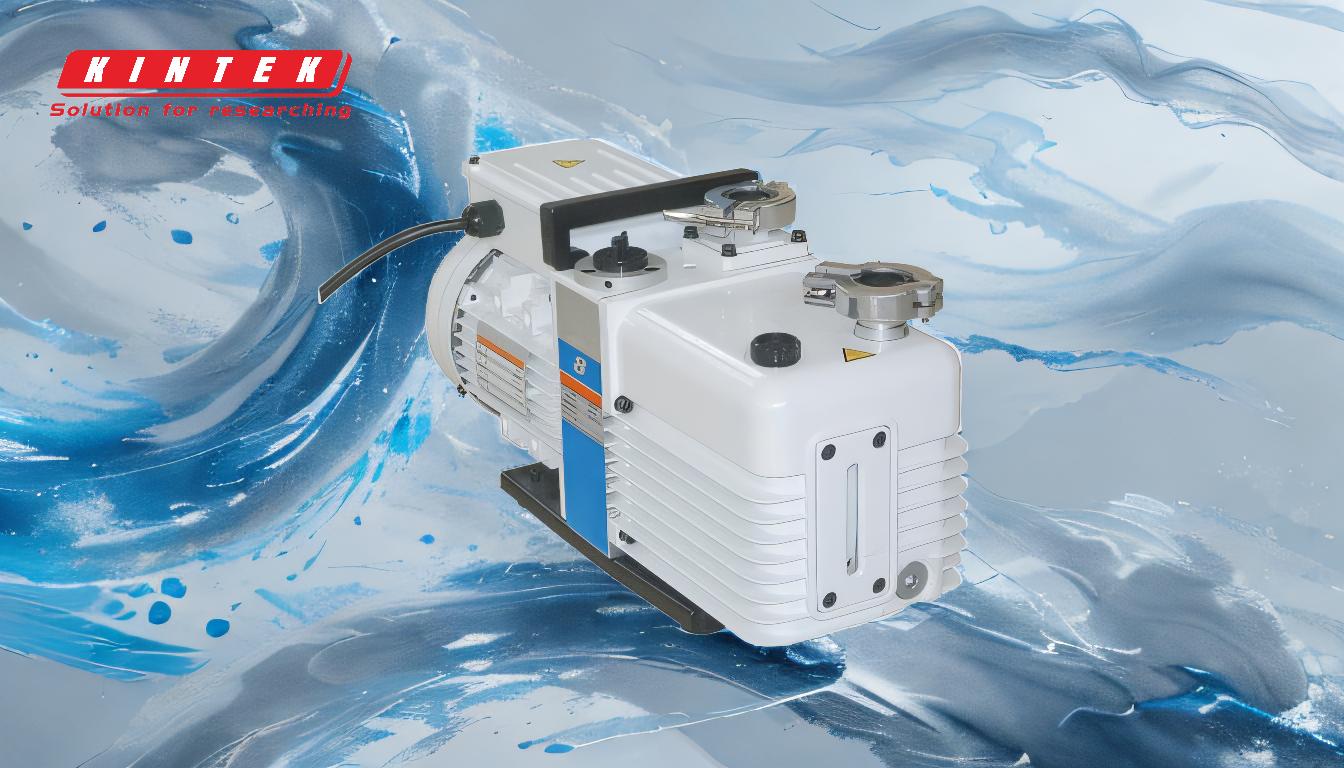The primary difference between a vacuum pump and a normal pump lies in their operational principles and applications. A vacuum pump is designed to remove gas molecules from a sealed volume to create a vacuum, whereas a normal pump is used to move fluids (liquids or gases) from one place to another. Vacuum pumps are essential in processes requiring low-pressure environments, such as in vacuum hot press systems, where they help achieve the necessary vacuum conditions for material processing. Normal pumps, on the other hand, are used in a wide range of applications, including water supply, chemical processing, and HVAC systems, where the primary goal is fluid transfer rather than creating a vacuum.
Key Points Explained:

-
Operational Principle:
- Vacuum Pump: A vacuum pump operates by removing gas molecules from a sealed volume to create a vacuum. This is achieved through various mechanisms such as displacement, momentum transfer, or entrapment. The goal is to reduce the pressure within the volume to a level significantly below atmospheric pressure.
- Normal Pump: A normal pump works by moving fluids (liquids or gases) from one location to another. The primary function is to increase the pressure of the fluid to facilitate its movement through a system, such as in pipelines or cooling systems.
-
Applications:
- Vacuum Pump: Vacuum pumps are used in applications that require a low-pressure environment. Examples include vacuum distillation, vacuum drying, and vacuum coating processes. They are also crucial in scientific research and industrial processes like semiconductor manufacturing and space simulation chambers.
- Normal Pump: Normal pumps are employed in a wide range of applications where fluid transfer is necessary. This includes water supply systems, chemical processing plants, and HVAC systems. They are also used in everyday appliances like washing machines and dishwashers.
-
Types of Pumps:
- Vacuum Pump: There are several types of vacuum pumps, including rotary vane pumps, diaphragm pumps, and turbomolecular pumps. Each type is suited for different levels of vacuum and specific applications.
- Normal Pump: Normal pumps come in various forms, such as centrifugal pumps, positive displacement pumps, and axial flow pumps. The choice of pump depends on the nature of the fluid, the required flow rate, and the system's pressure requirements.
-
Environmental Conditions:
- Vacuum Pump: Vacuum pumps are designed to operate in environments where the pressure is significantly lower than atmospheric pressure. They must be capable of handling the challenges associated with low-pressure conditions, such as the potential for gas leakage and the need for high precision in pressure control.
- Normal Pump: Normal pumps operate under a wide range of pressures, from low to high, depending on the application. They are designed to handle the specific characteristics of the fluid being pumped, such as viscosity and corrosiveness.
-
Maintenance and Durability:
- Vacuum Pump: Due to the demanding conditions in which they operate, vacuum pumps often require more frequent maintenance and are built to withstand the rigors of continuous operation in low-pressure environments. They may also require specialized lubrication and cooling systems.
- Normal Pump: Normal pumps generally have a longer service life and require less frequent maintenance compared to vacuum pumps. However, the maintenance requirements can vary significantly depending on the type of pump and the nature of the fluid being handled.
In summary, while both vacuum pumps and normal pumps are essential in various industrial and scientific applications, they serve fundamentally different purposes. Vacuum pumps are specialized equipment designed to create and maintain low-pressure environments, whereas normal pumps are versatile tools for fluid transfer across a wide range of pressures and applications. Understanding these differences is crucial for selecting the right pump for a specific task, especially in processes like those involving a vacuum hot press, where precise vacuum conditions are critical.
Summary Table:
| Aspect | Vacuum Pump | Normal Pump |
|---|---|---|
| Operational Principle | Removes gas molecules to create a vacuum. | Moves fluids (liquids or gases) from one place to another. |
| Applications | Used in low-pressure environments (e.g., vacuum distillation, semiconductor manufacturing). | Used in fluid transfer systems (e.g., water supply, HVAC, chemical processing). |
| Types | Rotary vane, diaphragm, turbomolecular pumps. | Centrifugal, positive displacement, axial flow pumps. |
| Environmental Conditions | Operates in low-pressure environments with high precision. | Operates across a wide range of pressures, handling various fluid properties. |
| Maintenance | Requires frequent maintenance due to demanding low-pressure conditions. | Generally requires less maintenance, depending on fluid and pump type. |
Need help selecting the right pump for your application? Contact our experts today!









